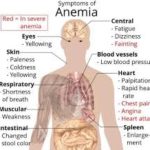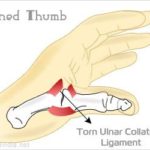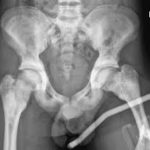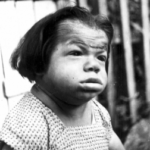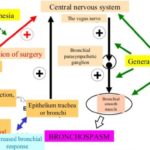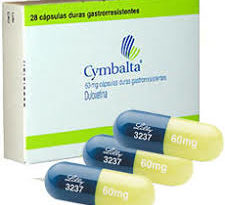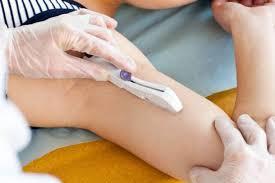Sternal Angle
What Is Sternal Angle?
The sternal angle or angle of Louis is the angulation of the transverse joint between the body of the sternum and the manubrium. The angle is named after the French Physician Antoine Louis. This manubriosternal joint marks the 2nd pair of costal cartilage level and is found in line with the intervertebral disc between thoracic vertebrae 4 and 5. The sternal angle varies between 160-169 degrees [1, 2, 3, 4].
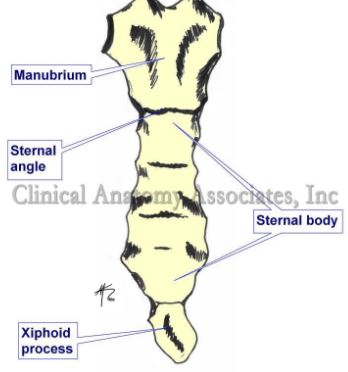
Figure 1 shows an illustration of the sternal angle
Image Source – Clinical Anatomy Associates
Clinical Significance
The level of the sternal angle provides as a landmark for the following anatomical features [1, 2, 3, 4]:
- Beginning and the end of the arch of the aorta
- Branching of the pulmonary trunk. The pulmonary trunk separates into the left and right branches before it enters the lungs.
- Bifurcation of the trachea. The trachea separates into 2 bronchi at approximately this level of the chest.
- Azygos system. The azygos is a vein and it is at this level where it drains into the superior vena cava.
- Ligamentum arteriosum. This ligament is the connective tissue that is found in the pulmonary trunk and aorta.
- Left recurrent laryngeal looping under the arch of the aorta. This is where the vagus nerve comes down and the left recurrent laryngeal loops under the aorta.
- Cardiac plexus. This structure is a network of nerves that is formed by branches of cardiac nerves that is from both sympathetic and parasympathetic nervous system.

Sternal Angle Pain
Causes
There are individuals who may report pain in their sternal angle area and there are several possible etiology for this [5].
Trauma
Pain that is felt around the area of the sternal angle is the most common disorder of the sternal angle. Although some cases are due to an underlying medical condition but the most frequent cause of the pain is trauma to the area.
Individuals who engage in contact sports such as boxing or football at the most at risk to this due to the high possibility of a sternum injury.
Those who suffer from joint disorders are more vulnerable to this type of injuries because of their weaker bones. Weightlifting puts a large amount of stress in the ribs and manubriosternal joint which may also cause pain [5].
Another possible source of trauma to the sternum is from injuries sustain from falling or in a vehicular accident. Those who are in the driver seat may slam into the steering wheel and will lead to fractures in the sternum. This type of injury will cause severe pain in the sternal angle and in the ribs that are involved [5].
Costochondritis
The medical condition known as costochondritis is the inflammation of the connective tissues that connects the ribs to the sternum. It has no known cause and found to be the most common reason of chest pain in children and adolescents. It is relatively harmless and resolves by itself without requiring any treatment [6].
Tietze’s syndrome
Tietze’s syndrome is also an inflammation of the connective tissues in the sternal angle and may be mistaken for costochondritis. These 2 are distinct conditions and Tietze’s syndrome has characteristics that are not present in costochondritis. The pain in this syndrome comes abruptly and it radiates to the arms and shoulder. It is also accompanied by a swelling in the sternal angle [6].
Other medical conditions
There are medical conditions not related to the sternum which may cause pain in the area of the sternal angle. Examples of these conditions include heart valve diseases, coronary artery disease, gastroesophageal reflux disease, pneumonia and chronic obstructive pulmonary disease [7].
Treatment
The treatment for sternal angle pain depends on the underlying cause. The pain that is felt in the area should be referred to the physician in order to identify the underlying cause and receive the appropriate treatment [5, 7].
For the pain caused by trauma to the sternal, the use of hot compresses and ice packs may be beneficial in providing relief. Rest is also advised in order to give time to the injured tissues to heal. Anti-inflammatory or pain medications may also be prescribed to the patient [7].
Sternal angle pain brought by an underlying medical condition will be resolved by managing the disease that is present. This requires specific treatment and even hospitalization depending on the severity of the medical condition [7].
References
- Anatomy Zone. (2013, January 21). Sternal Angle. Retrieved from Anatomy Zone: http://anatomyzone.com/anatomy-feed/sternal-angle-2/
- Anatomy Zone. (2013, February 2). Sternal Angle of Louis. Retrieved from Anatomy Zone: http://anatomyzone.com/tutorials/musculoskeletal/sternal-angle/
- Miranda, E. A. (2015, June 1). Sternal angle (of Louis). Retrieved from Clinical Anatomy Associates Incorporated: https://clinanat.com/mtd/282-sternal-angle-of-louis
- Medchrome. (2011, January 23). Sternal angle of Louis: Significance of landmark. Retrieved from Medchrome: http://medchrome.com/basic-science/anatomy/sternal-angle-of-louis-significance-of-landmark/
- Healthy Life Med. (2015, June 9). Sternal Angle. Retrieved from Healthy Life Med: http://healthylifemed.com/sternal-angle/
- DerSarkissian, C. (2016, February 2). Costochondritis. Retrieved from Web MD: http://www.webmd.com/pain-management/costochondritis#1-1
- Kerkar, P. (2017, March 2). Pain in Sternum: Causes, Symptoms, Treatment. Retrieved from ePainAssist: https://www.epainassist.com/chest-pain/ribs/pain-in-sternum




